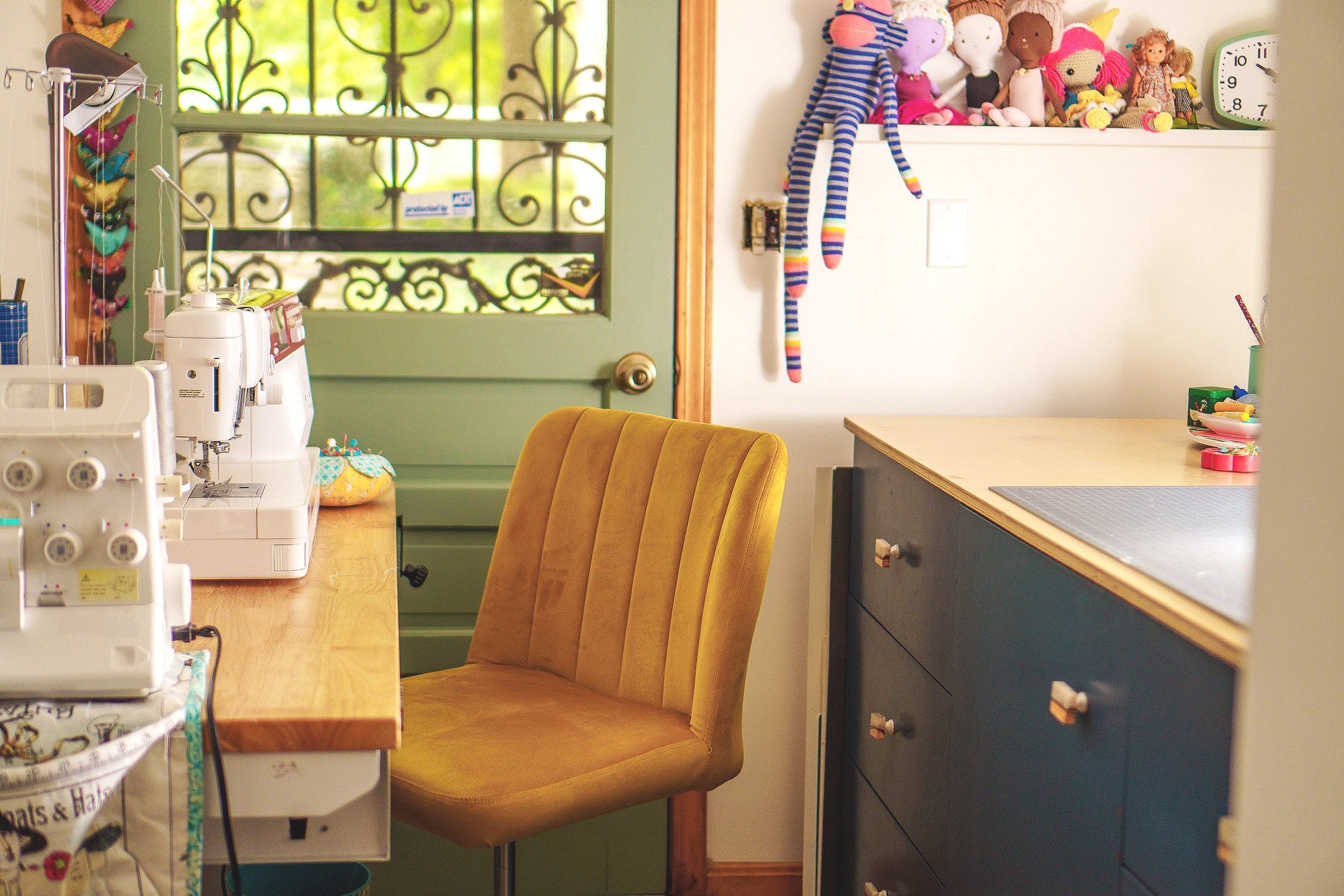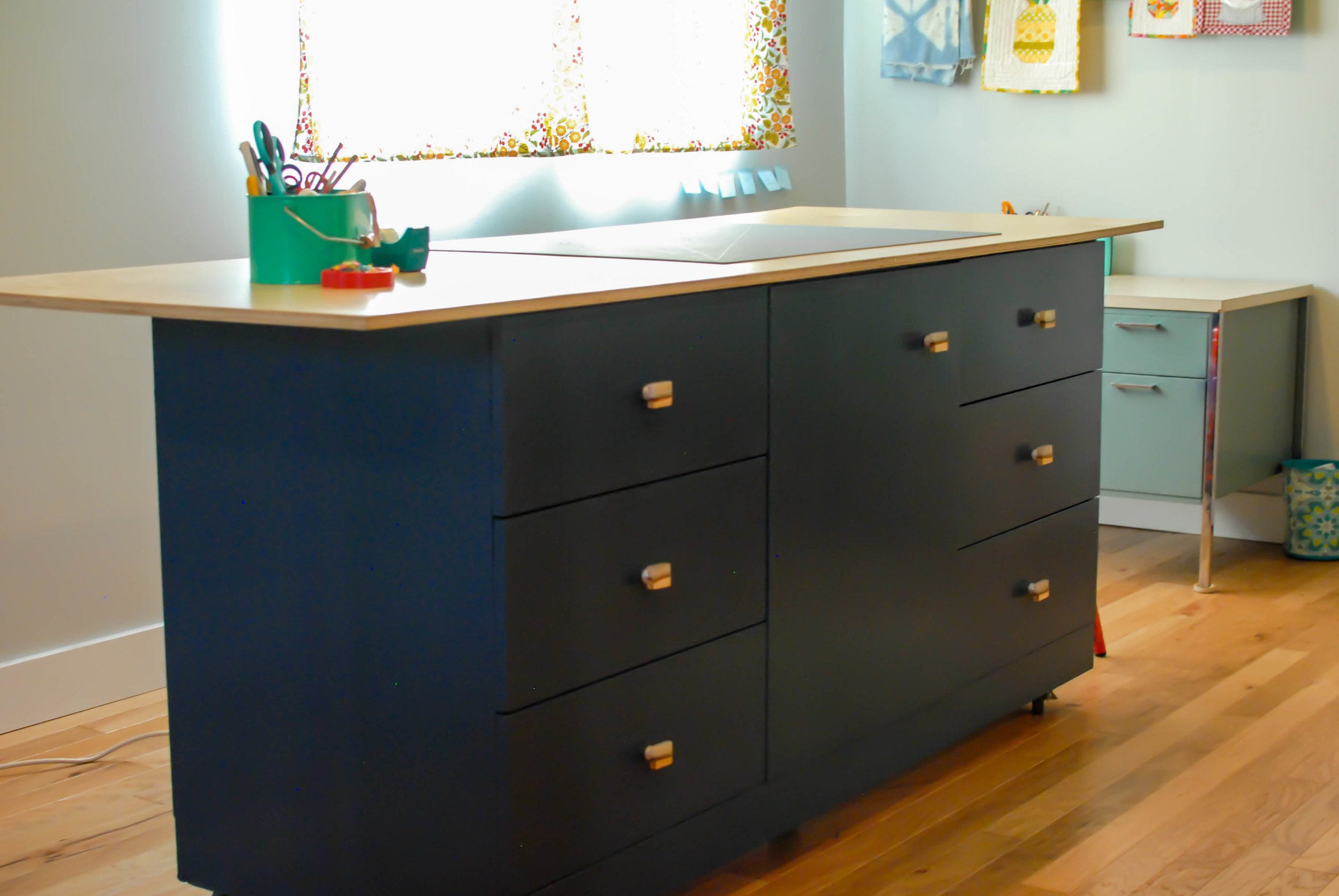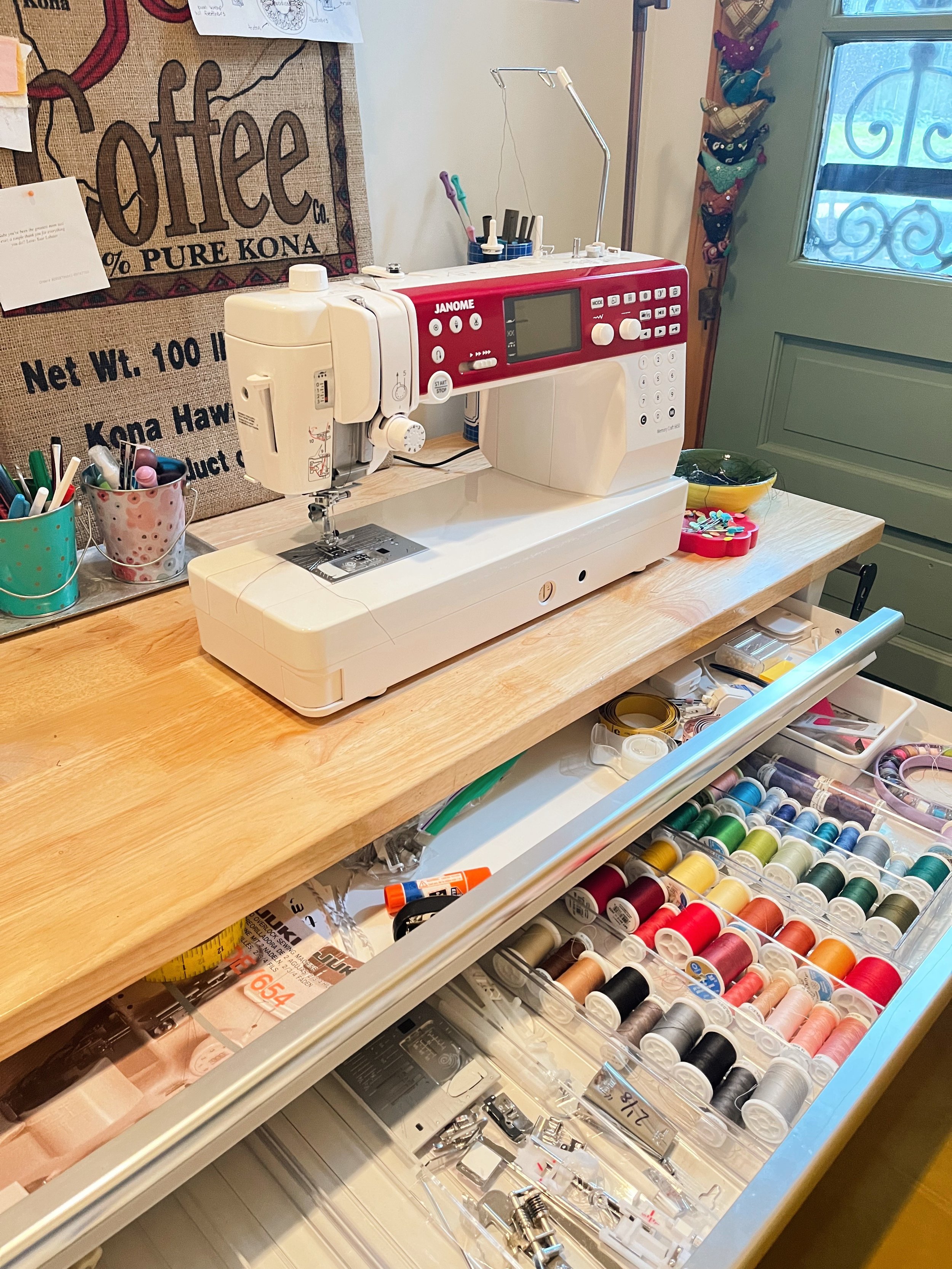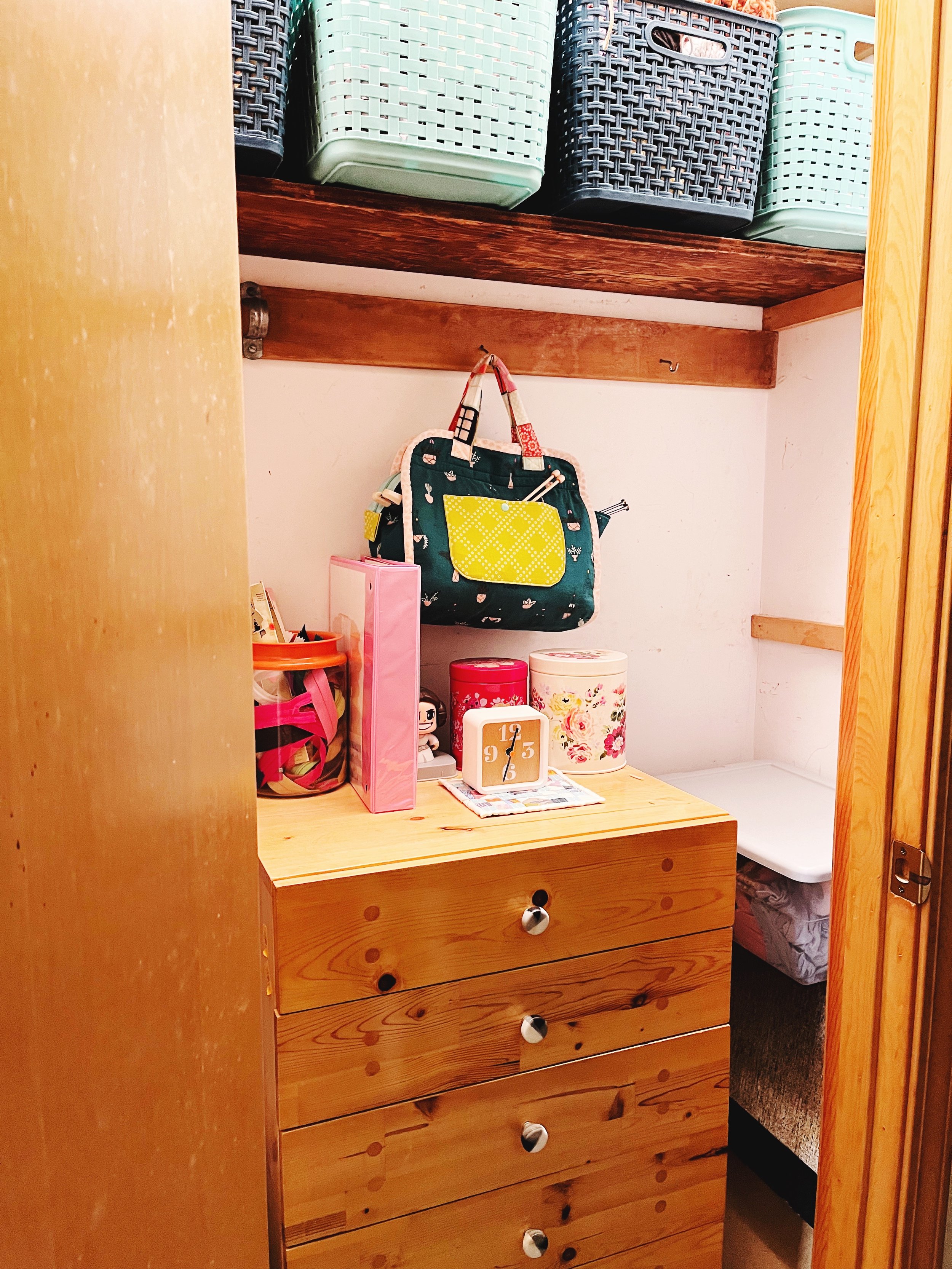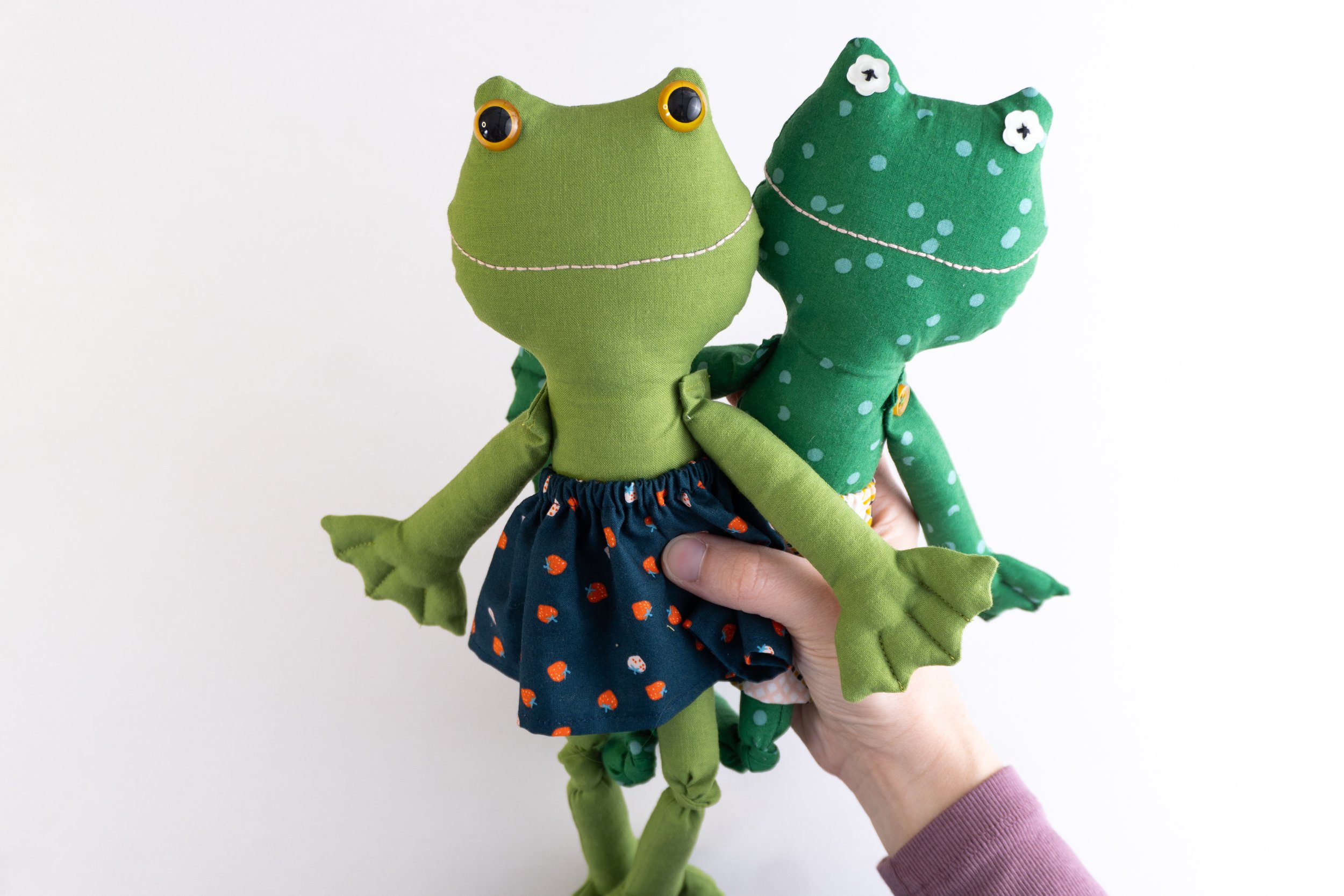Tour My New Sewing Room! Plus Tips for Small Spaces
I’m very excited to show you around my new, small-but-just-right sewing room today! As someone who has lived in 7 states now, you can imagine that I have sewn in all kinds of spaces, from big rooms to basements, to hallway desks, to living room corners. Because of this, I’ve amassed quite a few tips for adapting to sewing in small or make-shift spaces and I’m here to share those ideas with you today too so that you can make any space work for you!
I filmed a video of my new small sewing room and posted it to my YouTube channel. You can watch that for all the tips too, or you can skip the video and read the tips and see photos of my new sewing room just below.
Enjoy!
Nikki’s Tips for Small Space Sewing
Think carefully about storage
In small spaces, it really matters that you don’t crowd the walls and every inch of floor space with out-in-the-open storage. I know those thread racks, peg boards, and clear plastic tubs may seem like practical solutions for sewing supplies, but the more items you have out and visible, the more cluttered and crammed your space is going to feel.
Instead, opt for closed storage. I have a big dresser that we added a new, larger top to, that holds all my fabrics, patterns, and many notions inside it’s drawers. Additionally, I use a Husky workbench as my sewing machine desk. It’s long, shallow drawers are perfect for my threads, machine feet, and all the small tools I need close at hand, without them having to be out and visible all the time.
(This photo is of my cutting desk in a past, much larger sewing space. Thankfully, it just fit into my new tiny room!)
That’s not to say you shouldn’t hang anything up on the walls. I just mean, not everything you think needs to go on the wall actually does. Keep it pretty and avoid the visual overstimulation that comes with covering every square inch of wall space.
In my small room, I did hang a few shelves on the walls. They came in a 3 pack and were very easy to install. Two of them hold my rags dolls I’ve made for my pattern shop, and one holds all my quilting rulers, which I need close at hand, but can be hard to find a place for. You can get these shelves on Amazon, I highly recommend them.
Think beyond “sewing” furniture
Think beyond the “sewing desk” when selecting furniture. I mean the kinda cheap white ones marketed to sewists with doors that swing out and lots of tiny drawers that may not actually be the right size for anything. My Husky workbench is obviously made for tools, but it’s also perfect for sewing. It’s built to be super sturdy so it doesn’t shake even when I sew at top speed, it has long shallow drawers in the front to hold all my threads, machine accessories and other tools, AND it’s adjustable in height so I can sew at the perfect ergonomic height with no back pain!
While the cool looking sewing and craft desks look functional and practical in theory, they’re often not built sturdily enough. Plus, who wants to unfold their sewing furniture every time they sew?
I recommend looking for dressers, cabinets, or solidly built student desks and then getting creative with implementing them in the sewing room. If you do find a dresser to use as a cutting table like I did, you can replace the top with a larger one and even add casters for more height if you need it!
Get creative with storing needed tools
There are some sewing tools you need to have close at hand and ironing boards are one of the more awkward ones. Over-the-door ironing boards are a great option and can really save floor space. They also reduce risk of injury if you’re sewing with small kids present!
In one house, I used a built-in hallway desk as my sewing area. It was just a counter desk, but it was next to a deep closet, which I took over for storage, and I then hung a small ironing board on the closet door. It worked perfectly for me. If you don’t have a door nearby, a wall mounted one is another option.
Shop your house for more storage space
While some sewing tools need to be close at hand, there are other things that can be stored elsewhere in your home. For example, I have a modest amount of sewing and quilting books and magazines that I made room for on my personal bookshelf in my bedroom. Also, I needed a bit more space for sewing supplies and yarn, so I was able to take over the coat closet right outside my sewing room. We have plenty of other closets, so my family didn’t mind my taking over this one. My wooden cabinet fits perfectly in there, along with yarn bins and some other things.
Under bed bins are another great storage solution for those things that you don’t need access to all the time. They’re shallow, so you won’t have to dig through them to find things, but they can hide away neatly.
Even just one extra shelf in a linen closet somewhere can give you just enough added space!
Clean out your stuff
Y’all know I’m a big proponent of cleaning out your stuff, and doing it often! I have talked at length on this topic, so I won’t go on and on about it here, but just resist the urge to buy fabric for the sake of stash building, especially if you’re working with a small space. If you’re having to cram things into drawers and buy more and more plastic bins, perhaps it’s time to STOP adding storage and START making space in the storage you already have.
If you don’t have a sewing room …
Okay, if your’e in this position and you’re annoyed right now because you don’t have an actual room in your house just for sewing, don’t worry! This section is for you. It’s likely you can carve out space somewhere, even if it’s a corner of your living room. When my kids were little, that’s exactly what I did. Or, in one house, it was the hallway desk. Others find space for a small sewing desk in their dining room, which is a great idea because you have easy access to the dining room table for cutting.
While I’m on dining rooms, I know a lot of people who have a formal dining room and don’t actually use it. Could that be your sewing room instead? Do you have an absurdly large laundry room, a formal living room, an office you never use, or an odd nook in a landing or hallway? Get creative and try to find a place to set up your sewing machine permanently.
You need more cutting space than sewing space
When deciding where to sew, I think a lot of people think they need a large desk for their sewing machine, but what you really need is a lot of space for cutting and planning. The dining room table is a great option of course, and if that’s the only place you can cut, try cutting several projects out at once so that you don’t set up shop permanently on the table where your family needs to eat.
During those years I sewed on the hallway desk, if I had an intense project that I needed a flat surface close at hand for, I had a white folding table that I could set up temporarily in that hallway. My family could squeeze by and didn’t mind it, and it was just for a few days at a time until I finished the project.
Make sure you have light!
No matter where you’re sewing, you need good lighting! I’m a big fan of OttLite lamps which give off a natural light so they don’t distort colors, and they also don’t strain your eyes. They come in all shapes and sizes and are very popular with sewists and crafters, for good reason.
I also have some small desk lamps and task lights, and for hand sewing I love my around-the-neck book light! It’s an extremely useful gadget and the best book light you can buy.
If you have extra tips for sewing in small spaces, I’d love if you’d chime in in the comments!
Cheers,
Nikki

